Modeling Interface Damage with Random Interface Strength on Asphalt Concrete Impervious Facings
Abstract
:1. Introduction
2. Model Specification and Simulation Method
2.1. Damage Model
2.1.1. Interface Adhesion Mechanical Damage
2.1.2. Bulk Viscoelastic Damage Model
| Sealing layer a | 1 | 2 | 3 | 4 | 5 | 6 | |
| 1 × 10−13 | 2 × 10−12 | 3 × 10−11 | 2.5 × 10−10 | 1.8 × 10−9 | 1.2 × 10−8 | ||
| 4.44 | 7.16 | 10.9 | 15.7 | 21.7 | 28.4 | ||
| Impervious layer b | 1 | 2 | 3 | 4 | 5 | 6 | |
| 1429 | 148.5 | 17.57 | 2.080 | 0.2015 | 0.02615 | ||
| 2131 | 1491 | 1305 | 826.1 | 384.3 | 199.7 | ||
| Leveling and bonding c | 1 | 2 | 3 | 4 | 5 | 6 | |
| 2 × 103 | 2 × 102 | 2 × 101 | 2 | 2 × 10−1 | 2 × 10−2 | ||
| 116.6 | 273.9 | 597.7 | 1142.0 | 1844.0 | 2499.8 |
2.2. Geometric Model, FE Mesh and Constitution Parameters
2.3. Random Strength with Weibull PDF
2.4. Governing Equations and Boundary Conditions
2.4.1. Stress–Strain Field
2.4.2. Boundary Conditions
2.4.3. Boundary Load
3. Model Verification by Direct Shear Tests
4. Results and Discussion
4.1. Shear Stress and Strain Analysis of Interfaces
4.2. Damage Analysis of Interface
5. Conclusions
Author Contributions
Funding
Informed Consent Statement
Data Availability Statement
Acknowledgments
Conflicts of Interest
References
- Krishnan, J.M.; Rajagopal, K. Review of the Uses and Modeling of Bitumen from Ancient to Modern Times. Appl. Mech. Rev. 2003, 56, 149–214. [Google Scholar] [CrossRef]
- Jia, J. A Technical Review of Hydro-Project Development in China. Engineering 2016, 2, 302–312. [Google Scholar] [CrossRef]
- Xu, G.; Yu, Y.; Cai, D.; Xie, G.; Chen, X.; Yang, J. Multi-scale Damage Characterization of Asphalt Mixture Subject to Freeze-Thaw Cycles. Constr. Build. Mater. 2020, 240, 117947. [Google Scholar] [CrossRef]
- Zhang, Y.; Höeg, K.; Wang, W.; Zhu, Y. Watertightness, Cracking Resistance, and Self-Healing of Asphalt Concrete Used as a Water Barrier in Dams. Can. Geotech. J. 2013, 50, 275–287. [Google Scholar] [CrossRef]
- Sofonea, M.; Han, W.; Shillor, M. Analysis and Approximation of Contact Problems with Adhesion or Damage; CRC Press: Boca Raton, FL, USA, 2005. [Google Scholar]
- Wang, Z.; Hao, J.; Sun, Z.; Ma, B.; Xia, S.; Li, X. Blistering Mechanism Analysis of Hydraulic Asphalt Concrete Facing. Appl. Sci. 2019, 9, 2903. [Google Scholar] [CrossRef]
- Onifade, I.; Birgisson, B.; Balieu, R. Energy-Based Damage and Fracture Framework for Viscoelastic Asphalt Concrete. Eng. Fract. Mech. 2015, 145, 67–85. [Google Scholar] [CrossRef]
- Deng, Z.; Li, W.; Dong, W.; Sun, Z.; Kodikara, J.; Sheng, D. Multifunctional Asphalt Concrete Pavement Toward Smart Transport Infrastructure: Design, Performance and Perspective. Compos. Part B Eng. 2023, 265, 110937. [Google Scholar] [CrossRef]
- Mohammad, L.N.; Raqib, M.; Huang, B. Influence of Asphalt Tack Coat Materials on Interface Shear Strength. Transp. Res. Rec. J. Transp. Res. Board 2002, 1789, 56–65. [Google Scholar] [CrossRef]
- Hu, X.; Lei, Y.; Wang, H.; Jiang, P.; Yang, X.; You, Z. Effect of Tack Coat Dosage and Temperature on the Interface Shear Properties of Asphalt Layers Bonded with Emulsified Asphalt Binders. Constr. Build. Mater. 2017, 141, 86–93. [Google Scholar] [CrossRef]
- Romanoschi, S.A.; Metcalf, J.B. Characterization of Asphalt Concrete Layer Interfaces. Transp. Res. Rec. J. Transp. Res. Board 2001, 1778, 132–139. [Google Scholar] [CrossRef]
- Sudarsanan, N.; Fonte, B.R.; Kim, Y.R. Application of Time-Temperature Superposition Principle to Pull-Off Tensile Strength of Asphalt Tack Coats. Constr. Build. Mater. 2020, 262, 120798. [Google Scholar] [CrossRef]
- Pirmohammad, S.; Ayatollahi, M.R. Fracture Behavior of Asphalt Materials; Springer: Dordrecht, The Netherlands, 2020. [Google Scholar]
- Tapsoba, N.; Baaj, H.; Sauzéat, C.; Di Benedetto, H.; Ech, M. 3D Analysis and Modelling of Thermal Stress Restrained Specimen Test (TSRST) on Asphalt Mixes with RAP and Roofing Shingles. Constr. Build. Mater. 2016, 120, 393–402. [Google Scholar] [CrossRef]
- Qian, N.; Luo, W.; Ye, Y.; Liu, Y.; Yin, D.; Zheng, B.; Peng, H. Effects of the Ductility and Brittle Point of Modified Asphalt on the Freeze-Break Behavior of Asphalt Concrete: A 3D-Mesoscopic Damage FE Model. Constr. Build. Mater. 2023, 386, 131555. [Google Scholar] [CrossRef]
- Liu, X.; Gong, Z.; Wang, X.; Yang, J.; Liang, B.; Cheng, J. Effect of Interface Damage on Band Structures in a Periodic Multilayer Plate. Mech. Compos. Mater. 2020, 55, 785–796. [Google Scholar] [CrossRef]
- Wu, J.-Y.; Nguyen, V.P. A Length Scale Insensitive Phase-Field Damage Model for Brittle Fracture. J. Mech. Phys. Solids 2018, 119, 20–42. [Google Scholar] [CrossRef]
- Nitka, M.; Tejchman, J. Modelling of Concrete Behaviour in Uniaxial Compression and Tension with DEM. Granul. Matter 2015, 17, 145–164. [Google Scholar] [CrossRef]
- Kim, H.; Buttlar, W.G. Discrete Fracture Modeling of Asphalt Concrete. Int. J. Solids Struct. 2009, 46, 2593–2604. [Google Scholar] [CrossRef]
- Gao, X.; Fan, Z.; Zhang, J.; Liu, S. Micromechanical Model for Asphalt Mixture Coupling Inter-Particle Effect and Imperfect Interface. Constr. Build. Mater. 2017, 148, 696–703. [Google Scholar] [CrossRef]
- Masson, J.F.; Lacasse, M.A. A review of adhesion mechanisms at the crack sealant/asphalt concrete interface. In Proceedings of the 3rd International Symposium on Durability of Building and Construction Sealants, Fort Lauderdale, FL, USA, 2 February 2000; pp. 259–274. [Google Scholar]
- Luan, Y.; Ma, T.; Wang, S.; Ma, Y.; Xu, G.; Wu, M. Investigating Mechanical Performance and Interface Characteristics of Cold Recycled Mixture: Promoting Sustainable Utilization of Reclaimed Asphalt Pavement. J. Clean. Prod. 2022, 369, 133366. [Google Scholar] [CrossRef]
- Bellary, A. Experimental and Numerical Study on Performance of Un dowelled Joints in Concrete Pavements. PhD Thesis, National Institute of Technology Karnataka, Mangalore City, India, 2022. [Google Scholar]
- Yang, K.; Li, R. Characterization of Bonding Property in Asphalt Pavement Interlayer: A Review. J. Traffic Transp. Eng. (Eng. Ed.) 2021, 8, 374–387. [Google Scholar] [CrossRef]
- Raab, C.; Partl, M.N. Effect of Tack Coats on Interlayer Shear Bond of Pavements. In Proceedings of the 8th Conference on Asphalt Pavements for Southern Africa (CAPSA’04), Sun City, South Africa, 12–16 September 2004; p. 16. [Google Scholar]
- Suresh, S. Graded Materials for Resistance to Contact Deformation and Damage. Science 2001, 292, 2447–2451. [Google Scholar] [CrossRef] [PubMed]
- Yang, K.; Li, R.; Yu, Y.; Pei, J.; Liu, T. Evaluation of Interlayer Stability in Asphalt Pavements Based on Shear Fatigue Property. Constr. Build. Mater. 2020, 258, 119628. [Google Scholar] [CrossRef]
- Weibull, W. A Statistical Theory of the Strength of Materials. Proc. Royal Swedish Inst. Eng. Res. 1939, 151, 1. [Google Scholar]
- Chen, M.; Geng, J.; Xia, C.; He, L.; Liu, Z. A Review of Phase Structure of SBS Modified Asphalt: Affecting Factors, Analytical Methods, Phase Models and Improvements. Constr. Build. Mater. 2021, 294, 123610. [Google Scholar] [CrossRef]
- Chen, Z.; Xu, W.; Zhao, J.; An, L.; Wang, F.; Du, Z.; Chen, Q. Experimental Study of the Factors Influencing the Performance of the Bonding Interface between Epoxy Asphalt Concrete Pavement and a Steel Bridge Deck. Buildings 2022, 12, 477. [Google Scholar] [CrossRef]
- Van der Heijden, A.M. Koiter’s Elastic Stability of Solids and Structures; Cambridge University Press: Cambridge, UK, 2009. [Google Scholar]
- Fan, X.U.; Yang, Y.F.; Ting, W. Curvature-Affected Instabilities in Membranes and Surfaces: A Review. Adv. Mec. 2021, 51, 342–363. [Google Scholar]
- Dong, Z.; Gong, X.; Zhao, L.; Zhang, L. Mesostructural Damage Simulation of Asphalt Mixture Using Microscopic Interface Contact Models. Constr. Build. Mater. 2014, 53, 665–673. [Google Scholar] [CrossRef]
- Han, D.; Liu, G.; Xi, Y.; Xia, X.; Zhao, Y. Simulation of Low-Temperature Brittle Fracture of Asphalt Mixtures Based on Phase-Field Cohesive Zone Model. Theor. Appl. Fract. Mech. 2023, 125, 103878. [Google Scholar] [CrossRef]
- Camanho, P.P.; Davila, C.G.; De Moura, M.F. Numerical Simulation of Mixed-Mode Progressive Delamination in Composite Materials. J. Compos. Mater. 2003, 37, 1415–1438. [Google Scholar] [CrossRef]
- Zhang, B.; Nadimi, S.; Eissa, A.; Rouainia, M. Modelling Fracturing Process Using Cohesive Interface Elements: Theoretical Verification and Experimental Validation. Constr. Build. Mater. 2023, 365, 130132. [Google Scholar] [CrossRef]
- Williams, M.L.; Landel, R.F.; Ferry, J.D. The Temperature Dependence of Relaxation Mechanisms in Amorphous Polymers and Other Glass-forming Liquids. J. Am. Chem. Soc. 1955, 77, 3701–3707. [Google Scholar] [CrossRef]
- Kim, Y.R. Modeling of Asphalt Concrete. In McGraw-Hill Construction; ASCE Press: Reston, VA, USA, 2009. [Google Scholar]
- Mazars, J. A Description of Micro- and Macro-Scale Damage of Concrete Structures. Eng. Fract. Mech. 1986, 25, 729–737. [Google Scholar] [CrossRef]
- Hesami, E.; Birgisson, B.; Kringos, N. Numerical and Experimental Evaluation of the Influence of the Filler–Bitumen Interface in Mastics. Mater. Struct. 2014, 47, 1325–1337. [Google Scholar] [CrossRef]
- Chen, S.; Wang, D.; Yi, J.; Feng, D. Implement the Laplace Transform to Convert Viscoelastic Functions of Asphalt Mixtures. Constr. Build. Mater. 2019, 203, 633–641. [Google Scholar] [CrossRef]
- Ruan, L.; Luo, R.; Wang, B.; Yu, X. Morphological Characteristics of Crack Branching in Asphalt Mixtures under Compression. Eng. Fract. Mech. 2021, 253, 107884. [Google Scholar] [CrossRef]
- Zhang, C.S.; Jiang, Z.J. Design of Pumped Storage Power Station; CEPP Press: Beijing, China, 2012. [Google Scholar]
- Mo, L.; Huurman, M.; Wu, S.; Molenaar, A. Investigation into Stress States in Porous Asphalt Concrete on the Basis of FE-Modelling. Finite Elements Anal. Des. 2007, 43, 333–343. [Google Scholar] [CrossRef]
- Xue, Q.; Liu, L. Hydraulic-Stress Coupling Effects on Dynamic Behavior of Asphalt Pavement Structure Material. Constr. Build. Mater. 2013, 43, 31–36. [Google Scholar] [CrossRef]
- Zhang, B. Study on Concrete Bridge Deck Waterproof Bonding Layer Material of Waterborne Epoxy Emulsified Asphalt. Master’s Thesis, Chongqing Jiaotong University, Chongqing, China, 2022. [Google Scholar]
- Siddiqui, M.A.; Hawwa, M.A. Flexural Edge Waves in a Kirchhoff Plate Carrying Periodic Edge Resonators and Resting on a Winkler Foundation. Wave Motion 2021, 103, 102720. [Google Scholar] [CrossRef]
- Lövqvist, L.; Balieu, R.; Kringos, N. A Micromechanical Model of Freeze-Thaw Damage in Asphalt Mixtures. Int. J. Pavement Eng. 2021, 22, 1017–1029. [Google Scholar] [CrossRef]
- Noii, N.; Khodadadian, A.; Aldakheel, F. Probabilistic Failure Mechanisms via Monte Carlo Simulations of Complex Micro-structures. Comput. Methods Appl. Mech. Eng. 2022, 399, 115358. [Google Scholar] [CrossRef]
- Khodadadian, A.; Noii, N.; Parvizi, M.; Abbaszadeh, M.; Wick, T.; Heitzinger, C. A Bayesian Estimation Method for Variational Phase-Field Fracture Problems. Comput. Mech. 2020, 66, 827–849. [Google Scholar] [CrossRef] [PubMed]
- Moretti, L.; Palozza, L.; D’andrea, A. Causes of Asphalt Pavement Blistering: A Review. Appl. Sci. 2024, 14, 2189. [Google Scholar] [CrossRef]
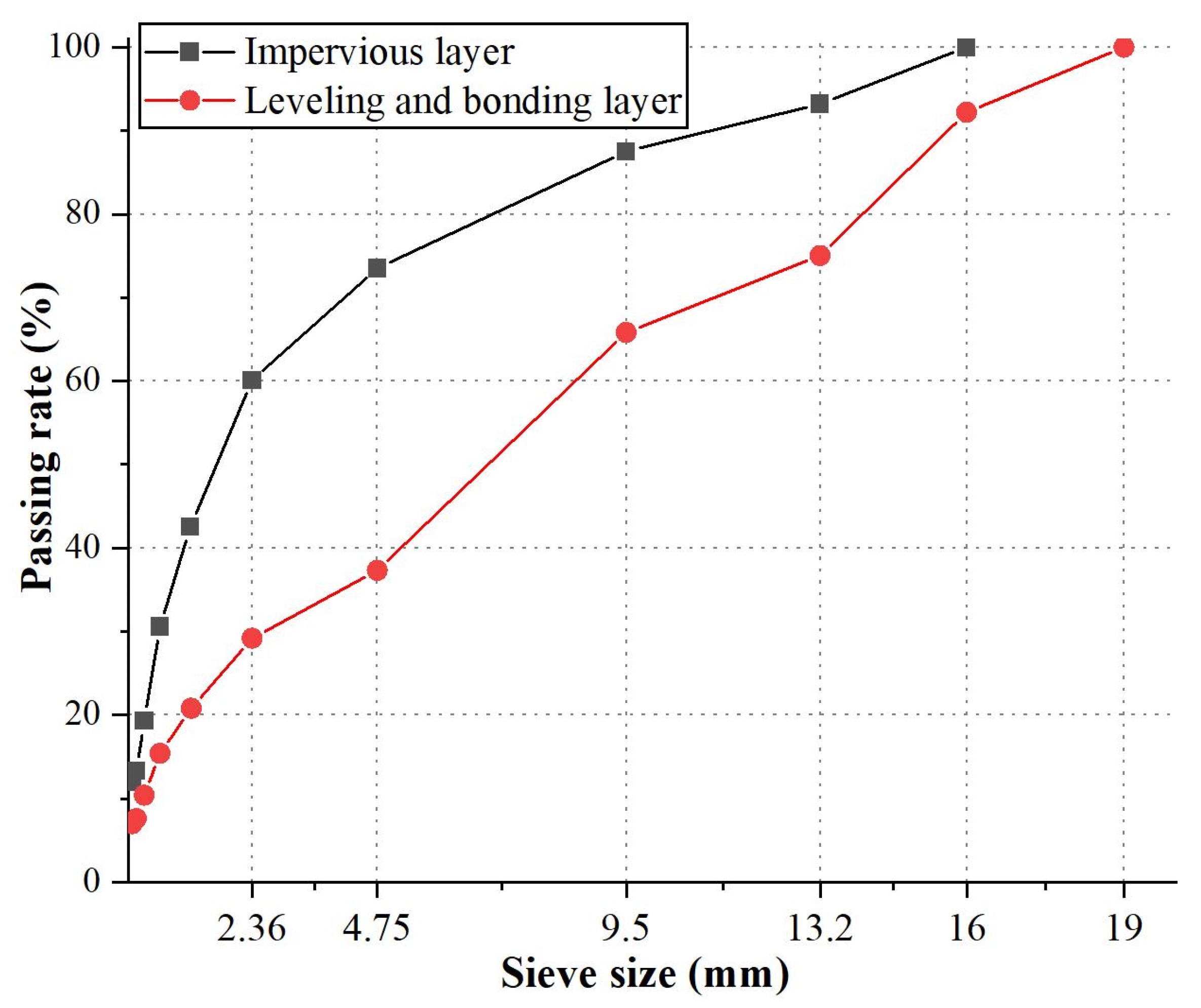
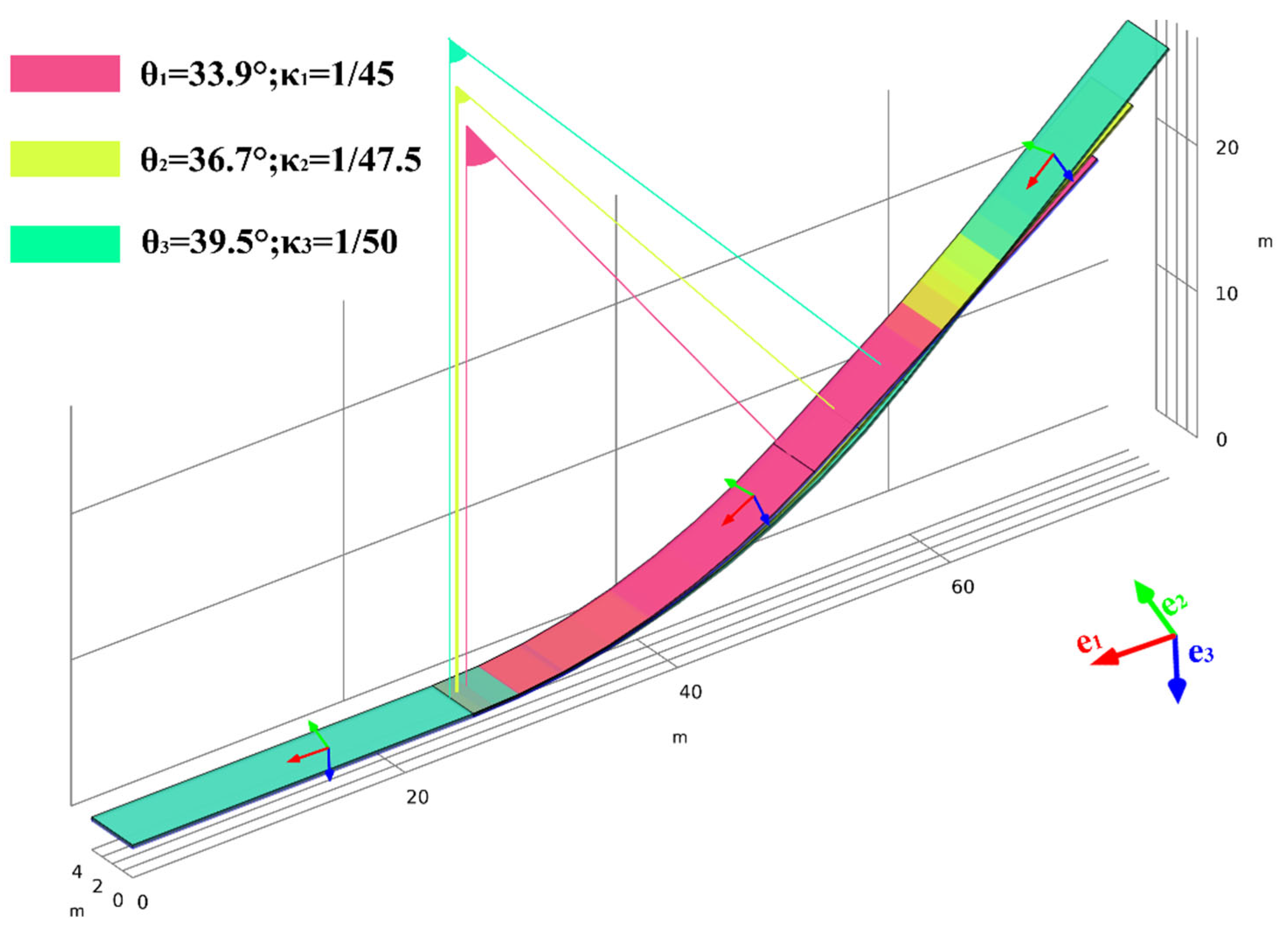
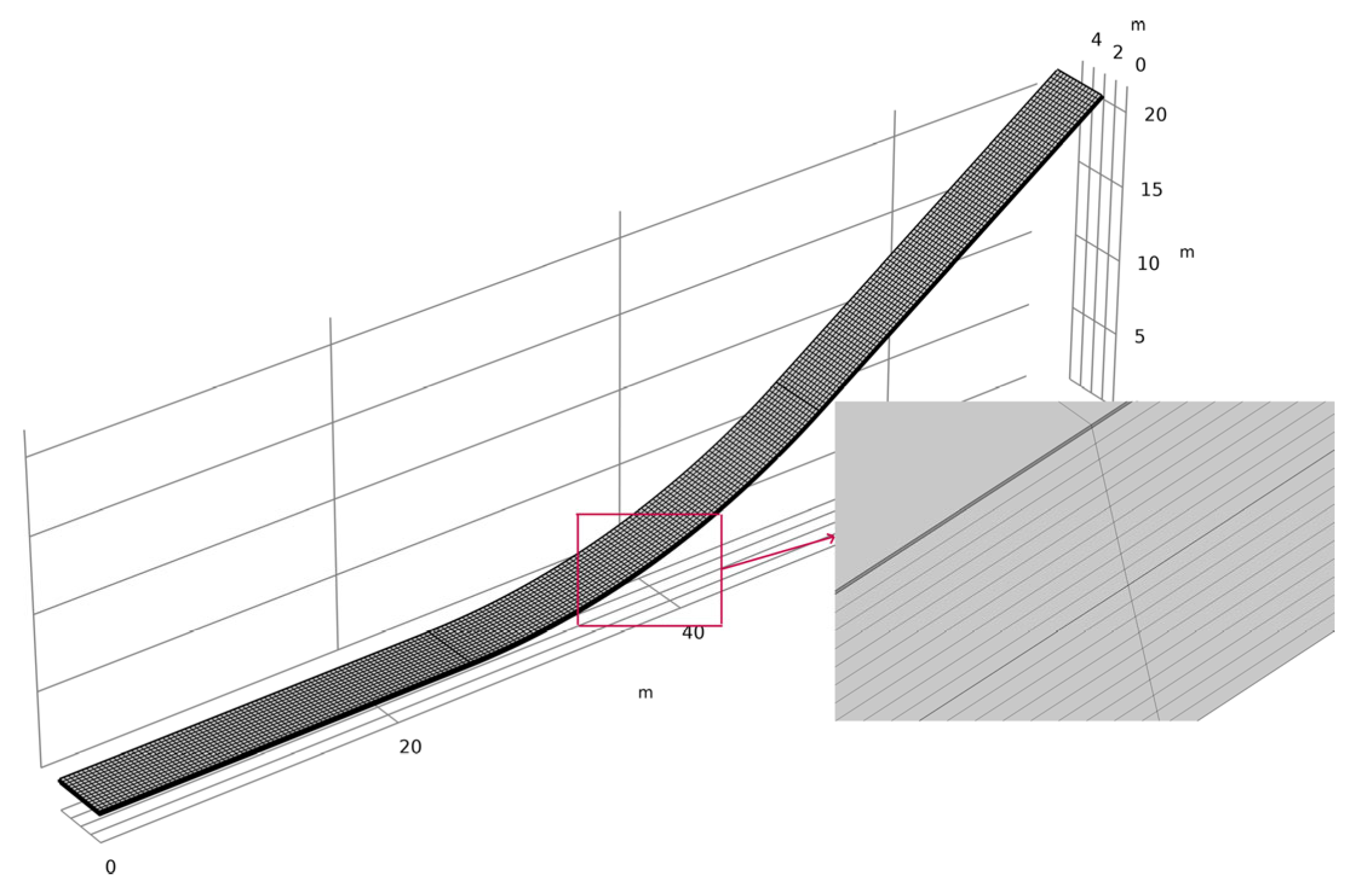


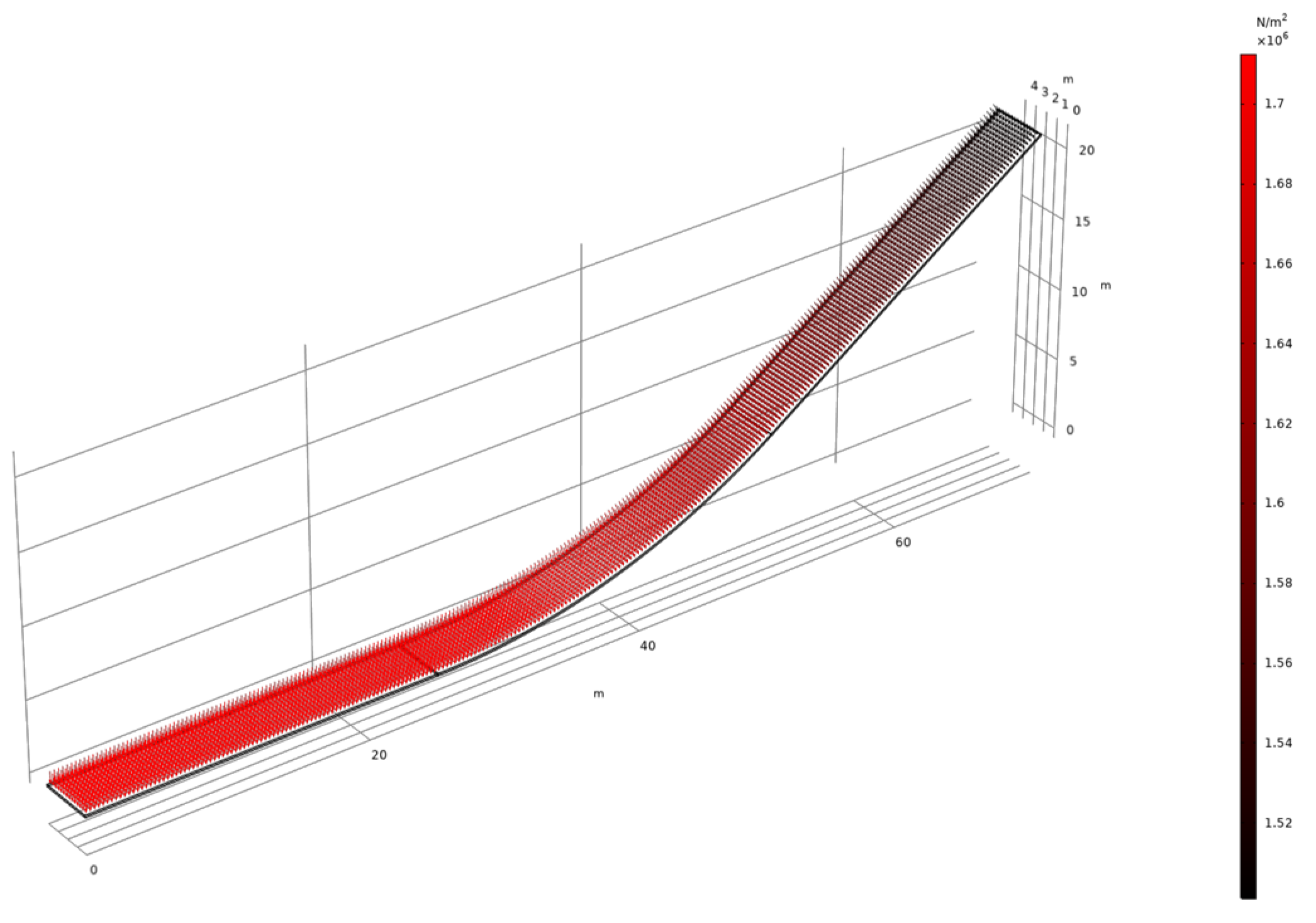


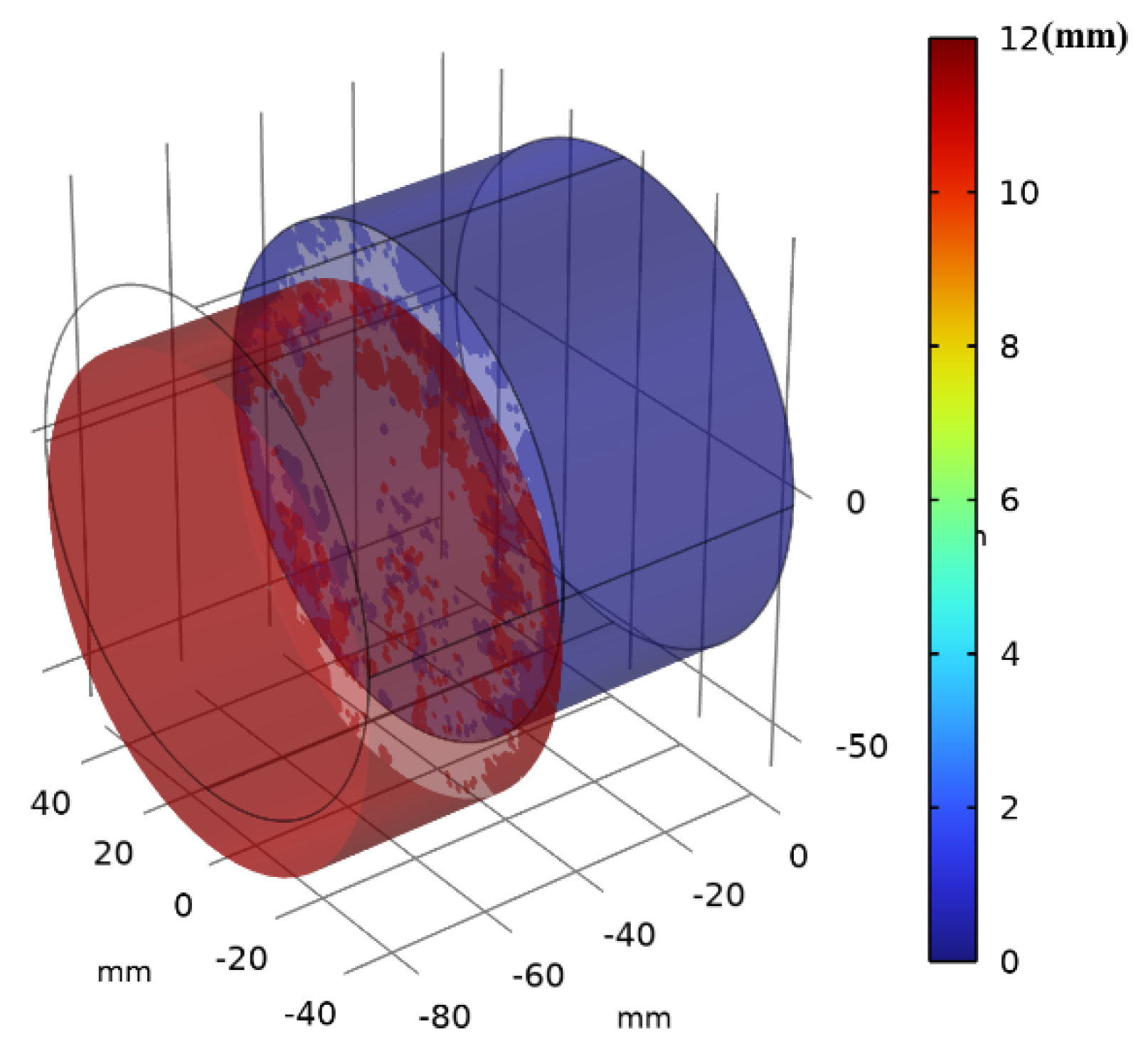


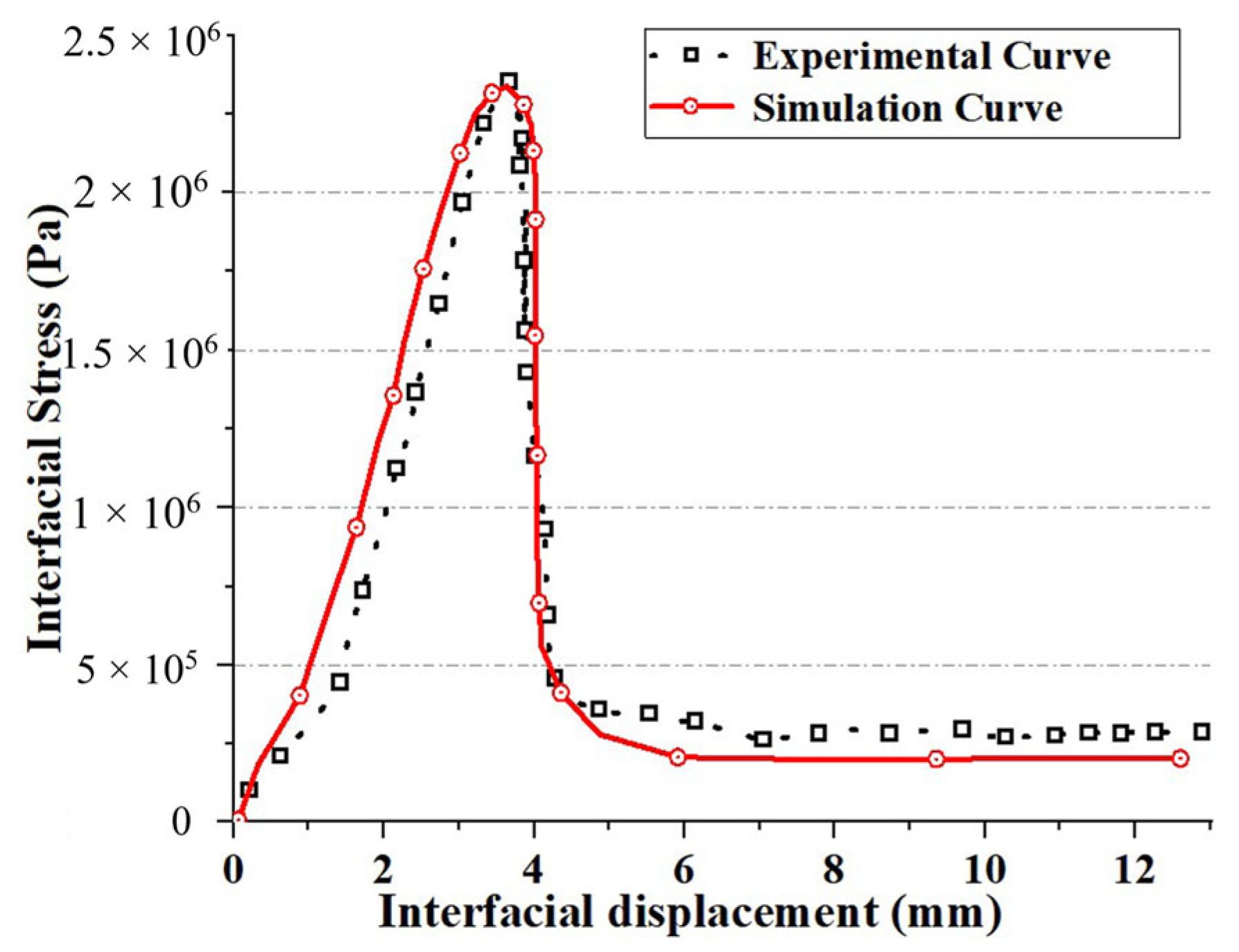
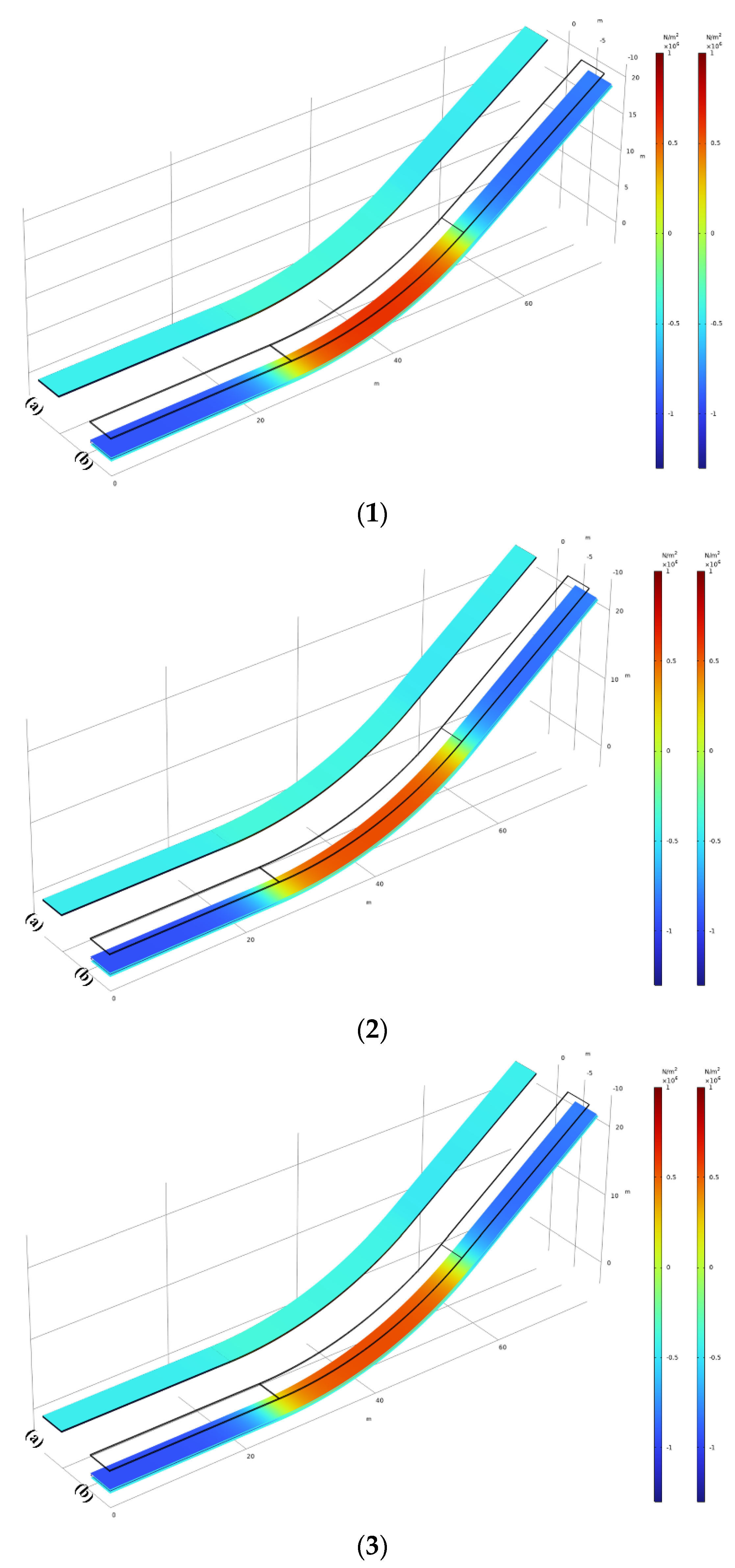
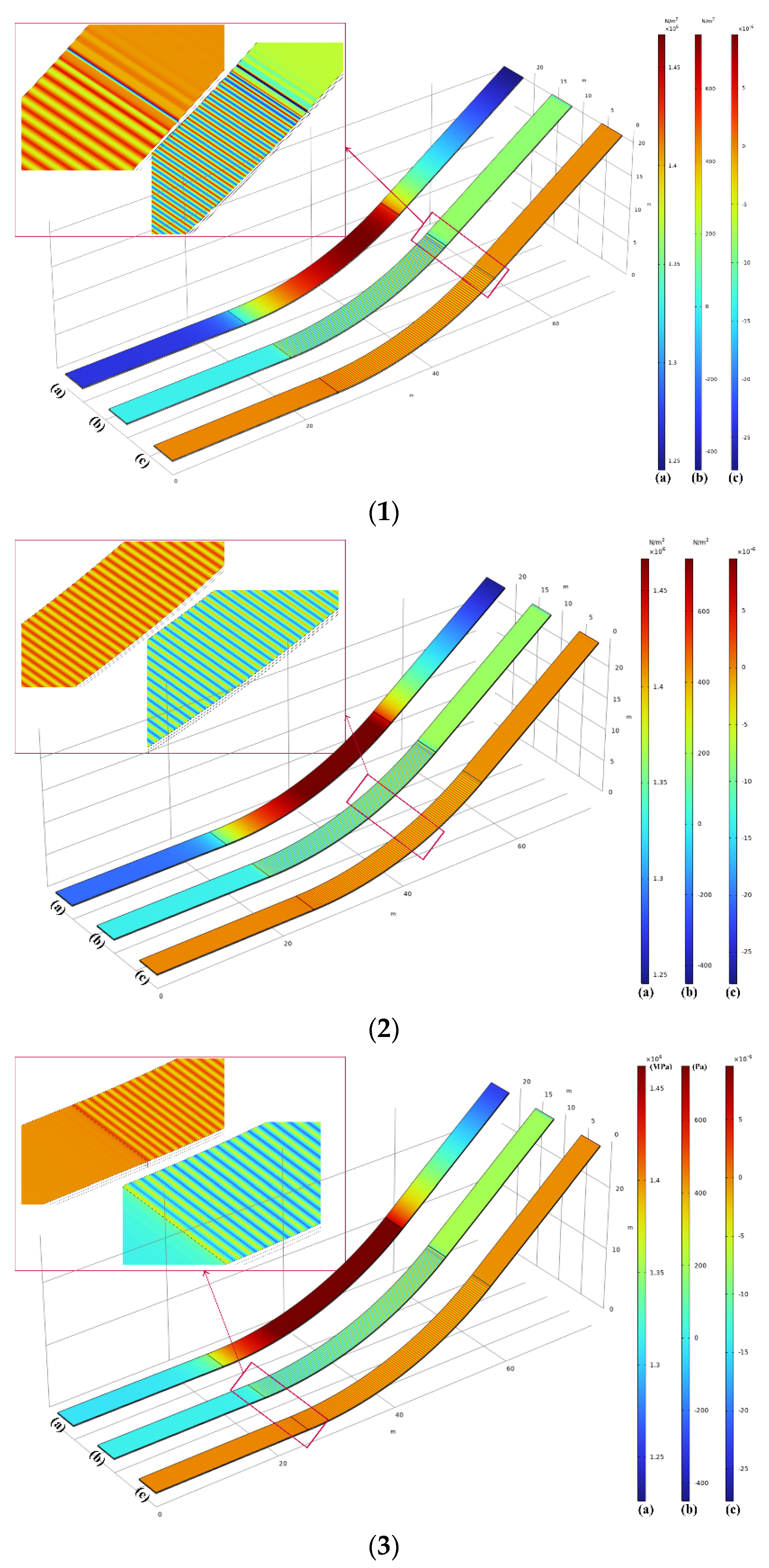

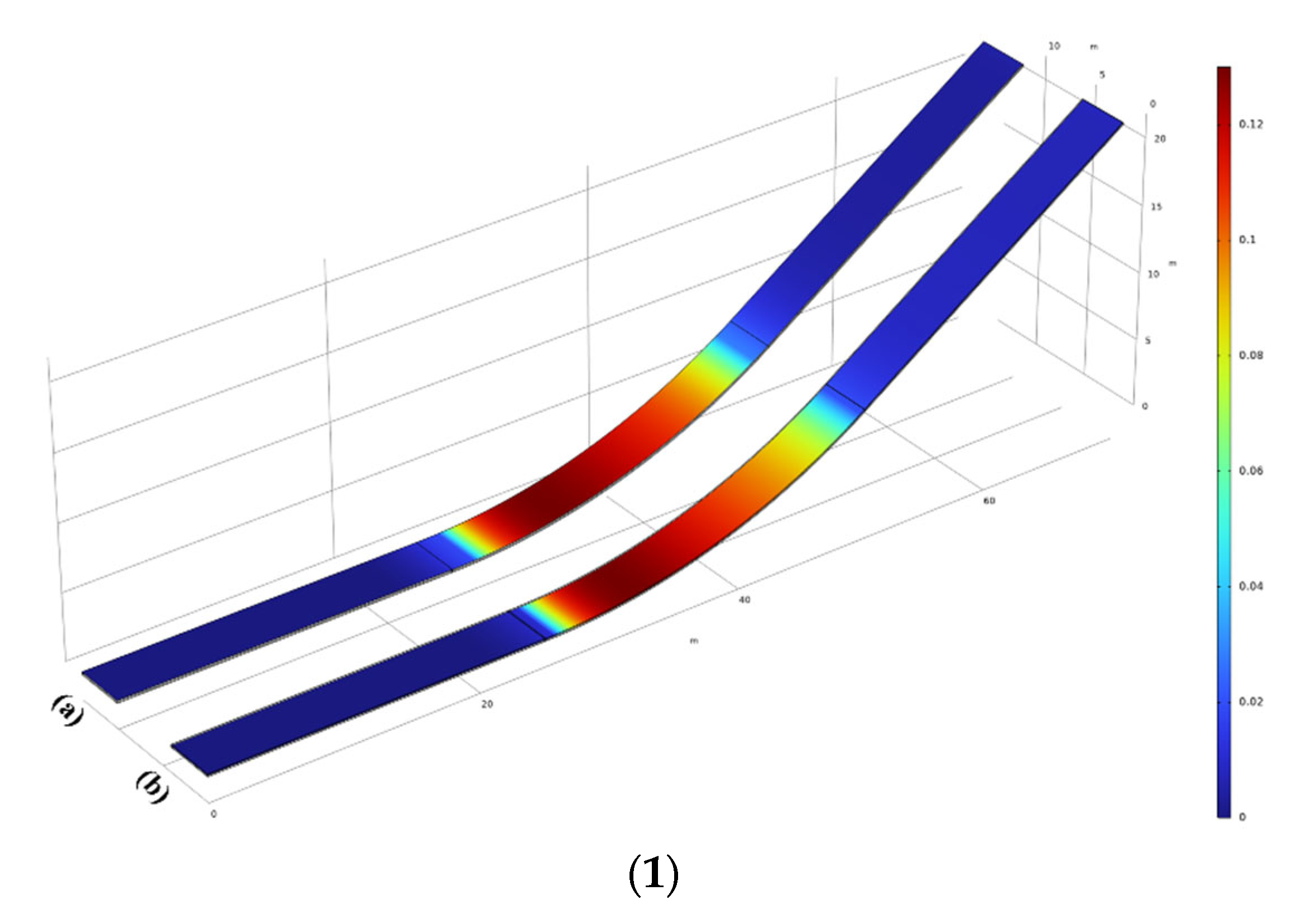
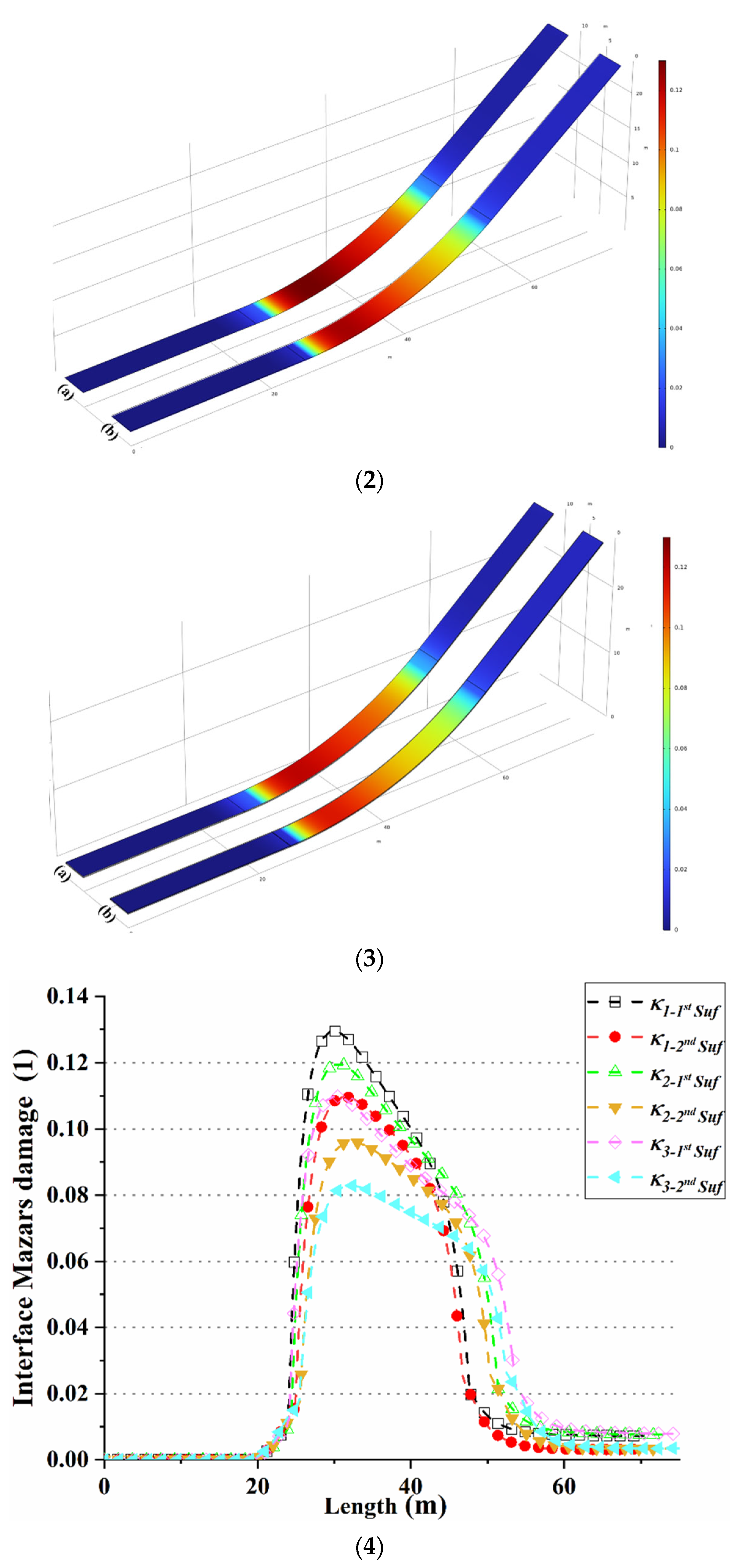
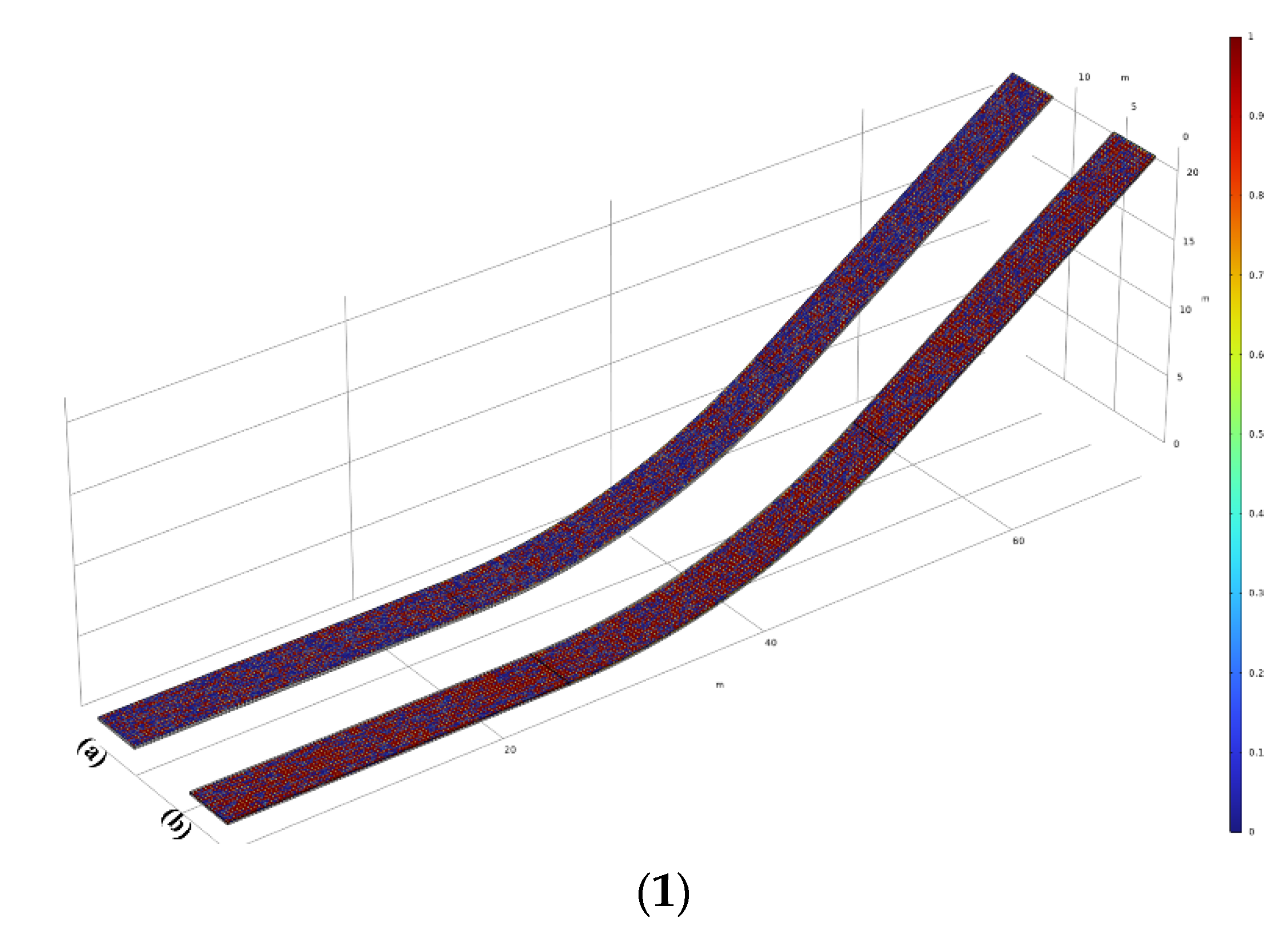
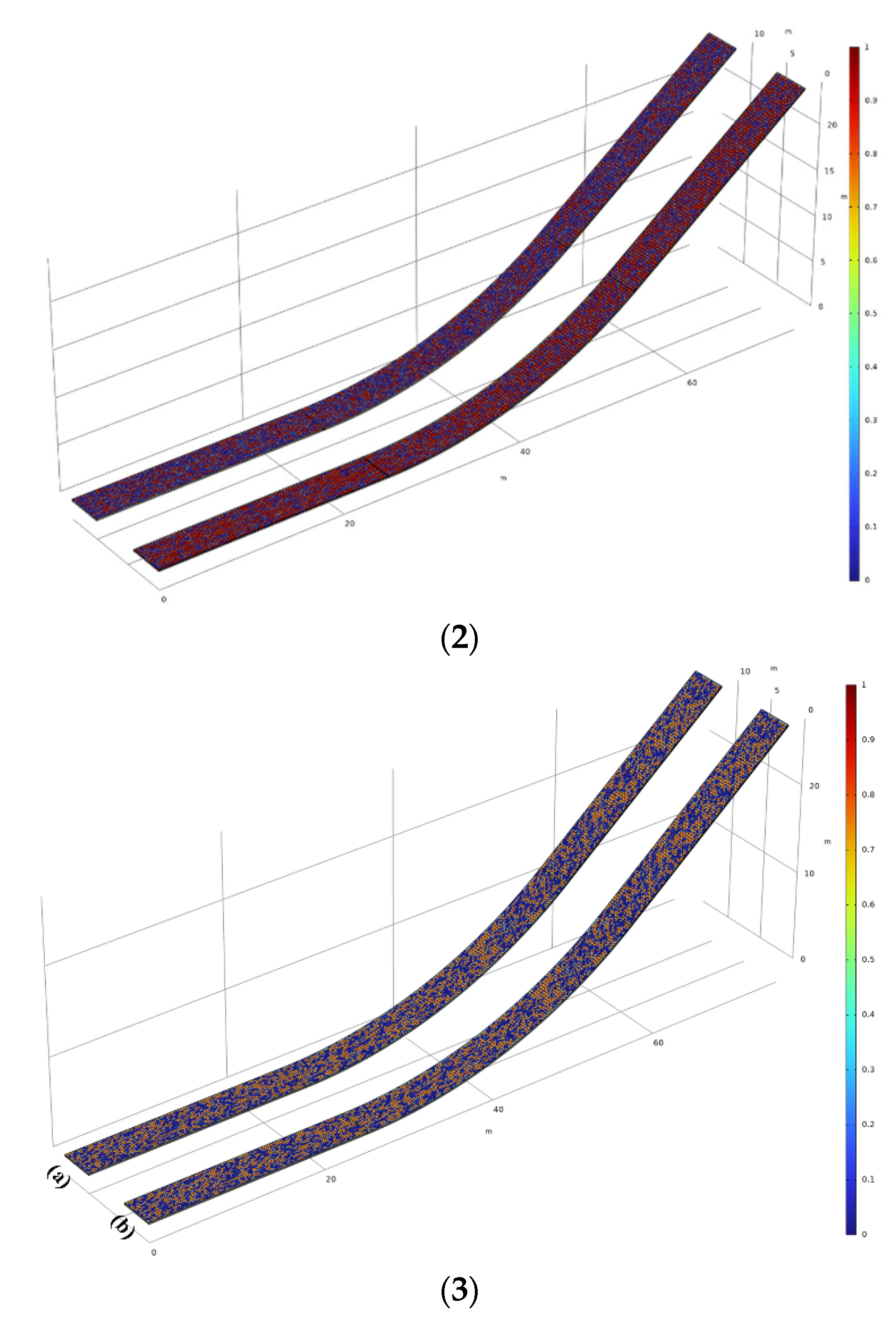
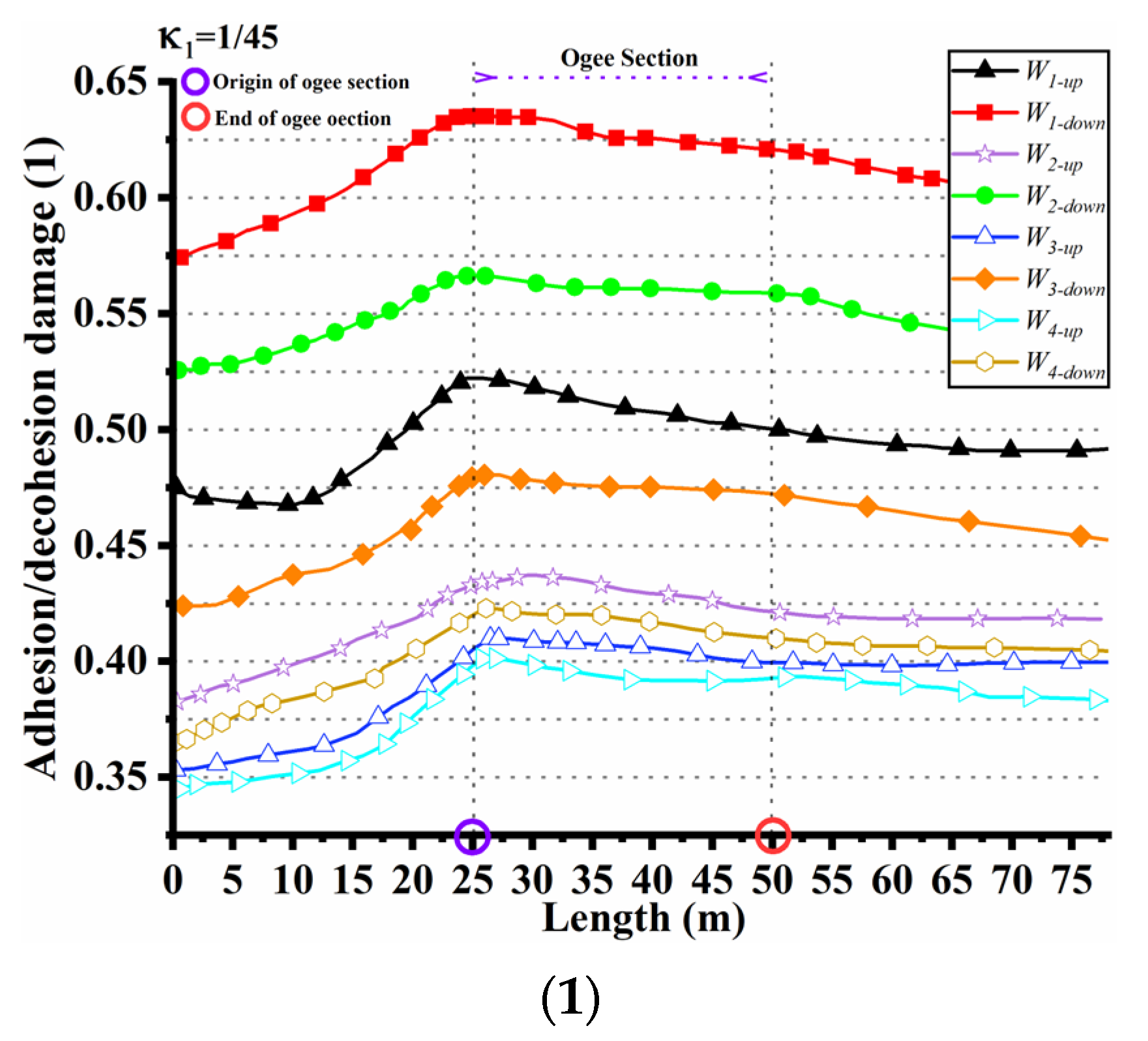

| Impervious layer | Sieve size (mm) | |||||||||||||||||||
| 16 | 13.2 | 9.5 | 4.75 | 2.36 | 1.18 | 0.6 | 0.3 | 0.15 | 0.075 | |||||||||||
| Passing rate (%) | ||||||||||||||||||||
| 100 | 93.2 | 87.5 | 73.5 | 60.1 | 42.5 | 30.6 | 19.3 | 13.3 | 12.0 | |||||||||||
| Leveling and bonding layer | Sieve size (mm) | |||||||||||||||||||
| 19 | 16 | 13.2 | 9.5 | 4.75 | 2.36 | 1.2 | 0.6 | 0.13 | 0.15 | 0.075 | ||||||||||
| Passing rate (%) | ||||||||||||||||||||
| 100 | 92.2 | 75.0 | 65.8 | 37.3 | 29.2 | 20.8 | 15.4 | 10.4 | 7.6 | 7.0 | ||||||||||
| Young’s Modulus (GPa) | Tensile Strength (MPa) | Compressive Strength (MPa) | Density (g/cm3) | Poisson’s Ratio (1) | |
|---|---|---|---|---|---|
| Sealing layer a | 0.086 | 7.6 | 2.61 | 1.73 | 0.2 |
| Impervious layer | 1.30 | 1.37 | 5.52 | 2.44 | 0.25 |
| Leveling and bonding layer b | 1.80 | 1.2 | 4.82 | 2.31 | 0.32 |
| Tensile strength (MPa) | Shear strength (MPa) | ||||
| Interface c | 0.56 1 | 0.936 2 | |||
| Interface (Random) | |||||
Disclaimer/Publisher’s Note: The statements, opinions and data contained in all publications are solely those of the individual author(s) and contributor(s) and not of MDPI and/or the editor(s). MDPI and/or the editor(s) disclaim responsibility for any injury to people or property resulting from any ideas, methods, instructions or products referred to in the content. |
© 2024 by the authors. Licensee MDPI, Basel, Switzerland. This article is an open access article distributed under the terms and conditions of the Creative Commons Attribution (CC BY) license (https://creativecommons.org/licenses/by/4.0/).
Share and Cite
Peng, H.; Qian, N.; Yin, D.; Luo, W. Modeling Interface Damage with Random Interface Strength on Asphalt Concrete Impervious Facings. Materials 2024, 17, 3310. https://doi.org/10.3390/ma17133310
Peng H, Qian N, Yin D, Luo W. Modeling Interface Damage with Random Interface Strength on Asphalt Concrete Impervious Facings. Materials. 2024; 17(13):3310. https://doi.org/10.3390/ma17133310
Chicago/Turabian StylePeng, Hui, Nanxuan Qian, Desheng Yin, and Wei Luo. 2024. "Modeling Interface Damage with Random Interface Strength on Asphalt Concrete Impervious Facings" Materials 17, no. 13: 3310. https://doi.org/10.3390/ma17133310




